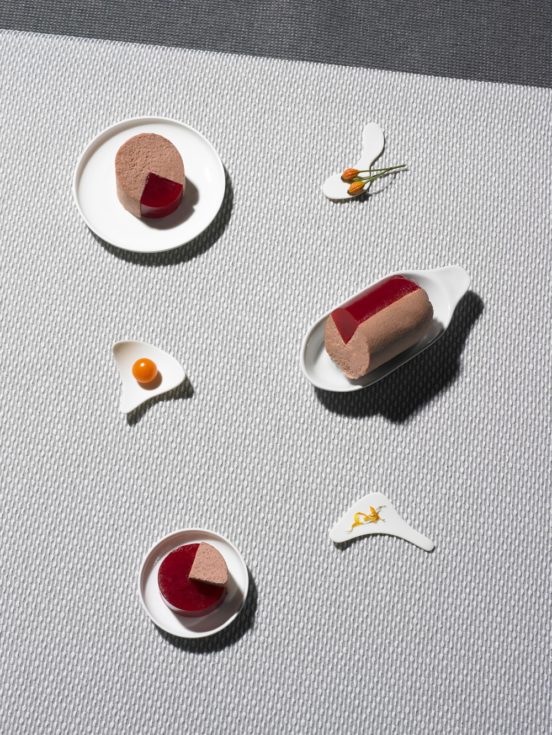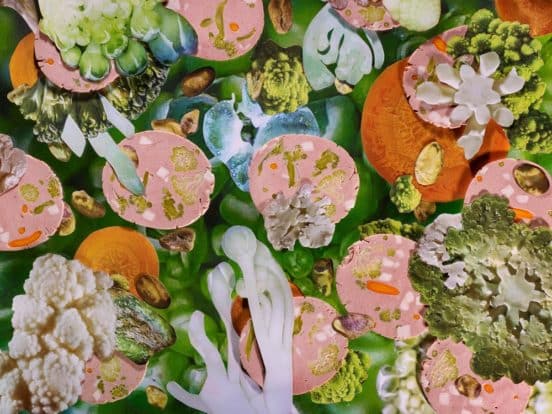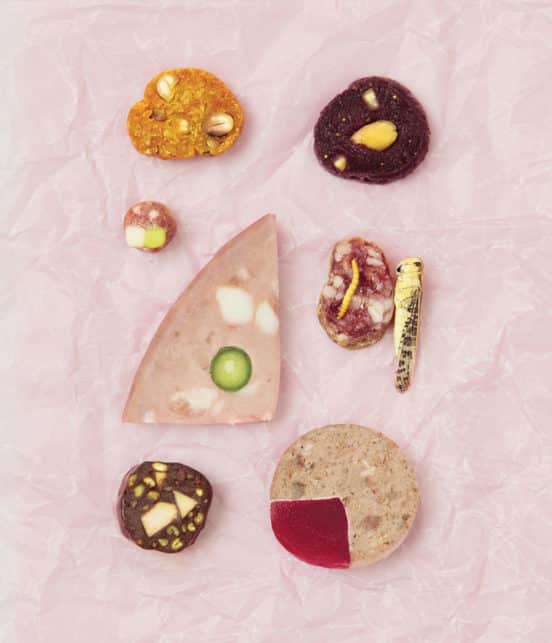Hublot, the watch company, has given its third annual Hublot Design Prize 2017 to Carolien Niebling for her masterful book and science project, The Future Sausage. The Hublot Design Prize was conceived as a reward for a designer who is already known, and the $100,000 prize is meant to further promising careers.
Niebling’s project is a unique research into sausages – which she calls one of the oldest product designs in the world. As she points out in her book, the sausage is at least 5,000 years old and has long been a staple of diets around the world. Working for three years with Dutch butcher Herman ter Weele from One and Swiss Chef Gabriel Serero, Niebling created a series of innovative sausages that are meant to be delicious, environmentally-sustainable and design-conscious.
We may not think of sausage as edible design objects, but this book will change your concept of the sausage by exploring its building blocks. Parts I and II present the many different designs of sausage, the way they are constructed, and explains which skins are used and why. Part III presents a list of ingredients which are somewhat lesser-known, which the three collaborators used for their future potential. The idea is to present a much broader concept of edible proteins than current exists for most people on earth. Part IV is the “Sausage Matrix,” summarizing all the categories and elements that have been discussed by the book. In the Matrix, the reader can visualize the different elements of sausage, exploring how to create different textures, colors and tastes.
The Hublot jury was impressed by the meticulous research and design that went into the unique book and it’s easy to see why. Niebling completed her Masters in Product Design from ECAL in 2014, and this pedigree shows in the illustrations accompanying the book. Over 100 illustrations using a unique drawing style was developed in order to provide schematics and aesthetics of the sausage designs.
Hublot is partial to people and artists who are disrupting the field, whether it’s technology or food. The watchmaker was inspired by its own iconic history to reward people with innovative ways of thinking and creating. They champion non-conformists and pioneers.
Niebling originally published her book with funds through Kickstarter, where 133 backers pledged over €25,376 on her €25,000 goal. She attracted people who were inspired by the goal of a meatless future, as well as those who saw the book primarily as an original design project.
Ironically, Niebling was not even a fan of sausage until she spent three years tasting more than 70 sausages with the chef and butcher. Their proposed sausages of the future include things like fruit salami (dried sausage made from dates, berries and almonds), insect pate (sausage comprised of insect flour and tonka-beans). These may sound radical, but Niebling is just one of many people who think future proteins will be drawn from insects.
Niebling hopes to inspire people to think outside the supermarket and return to humanity’s omnivorous roots. “We don’t dare to pick up a flower from the field and just put it in our mouth. You think there’s something wrong with it.” Edibility, she says, is not determined by what is offered on a store’s shelves.
SaveSave














